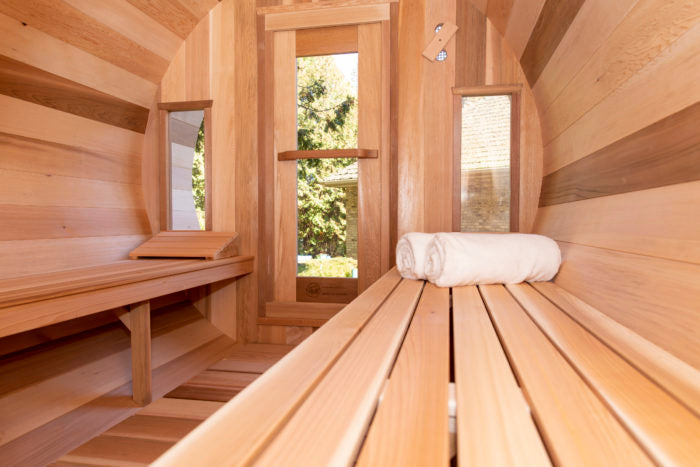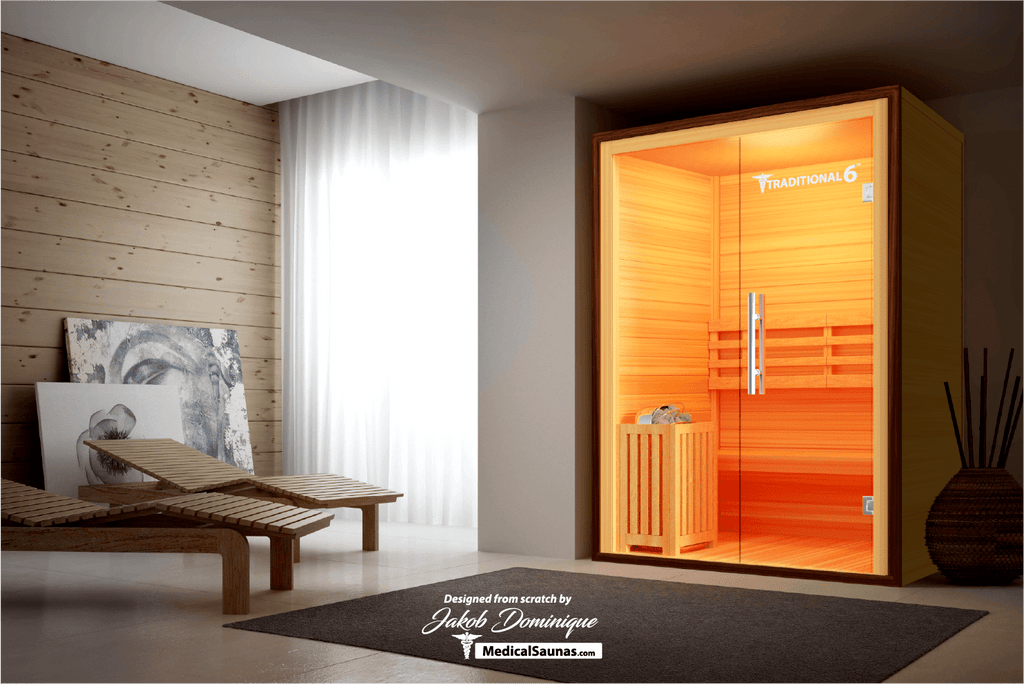What Does Traditional Sauna Do?
What Does Traditional Sauna Do?
Blog Article
A Biased View of Traditional Sauna
Table of ContentsThe Basic Principles Of Traditional Sauna Some Of Traditional SaunaTraditional Sauna for BeginnersThe Traditional Sauna PDFs
Most of the weight lost in a sauna is water loss and is re-gained upon rehydrating. Nevertheless, without a question sauna can be a vital part of a healthy weight loss program. To check out the distinctions in between typical and IR saunas, I will certainly divide these into proven, academic, and produced differences.Thus, the hottest point in the saunawhich is at the ceiling directly above the sauna heateris typically in between 185 and 190 F. Traditional Sauna. Claims that a standard sauna exceeds 200 F is just not real and not suitable for electric saunas sold in the United States. The temperature level for a far-infrared sauna is normally established between 120 and 140 F; nonetheless, unlike the typical sauna, the goal in and IR room is not to achieve a heat
Due to the fact that of this, the temperature level difference is almost unnecessary, given that excessive sweating leads to both sauna types, yet the approach of warming the body is different. In an IR sauna the bather will certainly really feel hot and will certainly sweat profusely, yet at a lot lower temperatures. Therefore, if the goal is to invest longer periods of time in the sauna, the IR sauna is an excellent selection.

See This Report about Traditional Sauna
When the high temperature is accomplished, the aspects cycle on and off to preserve the high temperature level. Many traditional sauna individuals enjoy pouring water over the rocks to develop heavy steam to raise sauna humidity degrees. The benefits of pouring water over the rocks include: making the space extra comfortable, dampening the nasal passages, and allowing the use of aromatherapy by mixing essential oils with the water.
In a far-infrared sauna, the warmth waves permeate the body to properly heat up the body and elevate the body core temperature. To accomplish this increased temperature level, Far-infrared emitters create infrared energy which is close to the exact same wavelength as that which the body naturally emitsoften described as the "Crucial Variety" of 7 to 14 microns), so the power is well obtained by the body.
When the power goes into the body, it triggers the body temperature to raise and ultimately results in sweat. In an infrared sauna it's important for the emitters/heaters to remain on virtually frequently. Considering that there is no mass of rocks to retain heat, the sauna will certainly cool down if the emitters closed off.
As discussed above, the sauna bather in an infrared space intends to place himself before operating emitters to obtain optimal benefit from the warmth. The home heating time for both rooms can be extremely various, relying on exactly how the areas are utilized. For a conventional sauna, a bather must permit 30-40 minutes for the space to achieve a desired temperature and to effectively pre-heat the rocks.
Not known Facts About Traditional Sauna
A well built sauna will commonly accomplish a temperature of 150-160 F in regarding 30-40 mins. For hotter temperatures, the room might need to heat for a longer duration.
To some, 15 mins was "squandered" while the infrared energy heated the wood panels as opposed to heating up a body, while others discover a pre-heated room to be more comfortable and believe an elevated starting temperature level is necessary to start sweating. The size of suggested use for every space is around the same (10-15 mins per session); nevertheless, due to the lower air temperature levels and the capacity to really feel the impacts of infrared warm faster than a traditional sauna, it is not uncommon for an individual to spend an overall of 20-30 minutes in an infrared sauna.
Typical saunas tend to be bigger (therefore utilize more electrical energy) than infrared saunas, although standard saunas are absolutely offered in one and 2 person dimensions. For a two-person standard sauna, 5x6 or 5x7 size is most prominent. The leading bench can conveniently seat two or 3 people and is likewise enough time to relax look these up throughout the sauna session.


The typical expense per kWH of power in the united state is around $0.11, so a 4.5 kW heating system will certainly cost around $.50 to compete one hour, if the heating system runs constantly for one hour. read what he said Usually a sauna heating system will certainly compete 75% of the first hour and 50% of succeeding hours on considering that the components cycle once the established temperature is achieved.
The Definitive Guide for Traditional Sauna
A 2 individual far-infrared room is normally literally smaller than a typical sauna, often concerning 4' x 4' or smaller. The IR heating system is commonly 1.5-1.7 kW utilizing a 120 volt 15 amp plug-in service. Because the room can be made use of quicker than a sauna area, we will think the space is utilized for to of an hour consisting of warm up time.
Ultimately, there is a seldom gone over distinction in the social experience in between the 2 spaces. While our society has actually shed a few of the social advantage of the typical sauna experience, it can be really socially fulfilling. From family members time in the sauna, to heart-felt conversations with better halves, to sauna partiesthe standard sauna experience can result check this site out in intimate mingling.
Most higher end infrared spaces consist of colored light therapy, noise systems and full-glass fronts.
Report this page